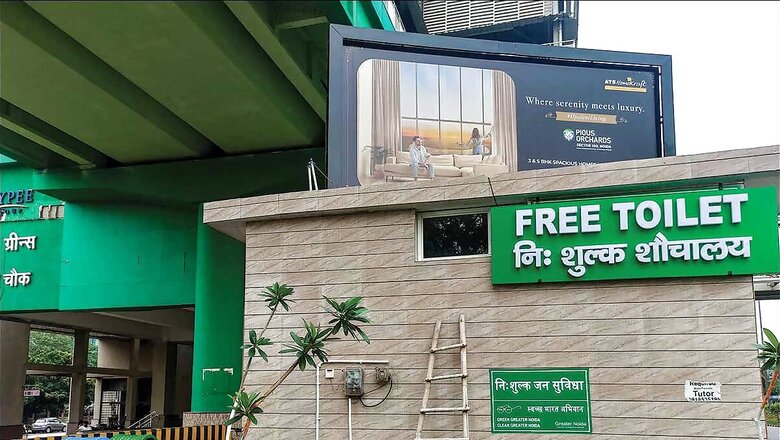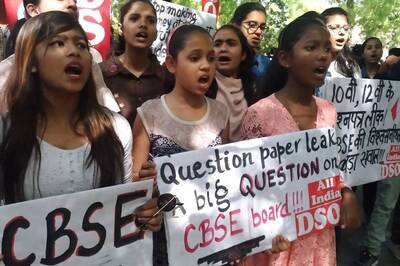
views
In many cultures across the world, rain is equated with abundance. According to the Chinese, rain symbolises abundance, prosperity and growth. In Botswana, rain is valued so highly, that it is also the name of their currency – the Pula. In India, we love the monsoon season for the relief it brings after our relentless summers.
But the monsoon season is a challenging time for many people in India, especially those who live in rural areas or slums where toilet sanitation facilities are inadequate or non-existent. And while the rain does bring renewal and growth to our lands, it can also wreak havoc that takes away wealth from communities. Heavy rains can damage or flood toilets, making them unusable or unsafe. This, in addition to the public health hazards that are a direct result of the pollution that comes from damaged toilets, drains and sewers, leading to contamination of water sources and spread of diseases.
To enjoy the bounty the rains bring without its ill effects, it is essential to find cost-effective solutions that can make toilets monsoon-proof, ensuring affordability without compromising quality.
Strategy 1: Use waterproof materials
One of the most important aspects of monsoon-proofing toilets is to use waterproof materials that can withstand moisture and prevent leakage. Some of the common materials that can be used are:
Concrete: is a strong and durable material that can resist water and corrosion. It can be used to build the toilet structure, the floor, the walls, and the roof. However, concrete can also be expensive and heavy, requiring skilled labour and transportation. Therefore, it is advisable to use concrete only for the essential parts of the toilet, such as the foundation and the septic tank, and use other materials for the rest.
Plastic: is a cheap and lightweight material that can be easily moulded and shaped. It can be used to make toilet seats, pipes, fittings, tanks, and other accessories. Plastic is also waterproof and easy to clean. However, plastic can also degrade over time due to exposure to sunlight and heat, and it can also pose environmental hazards if not disposed of properly. Therefore, it is advisable to use plastic only for the parts that need frequent replacement or maintenance, such as the toilet seat and the pipes.
Fibreglass: is a composite material made of glass fibres embedded in a resin matrix. It can be used to make toilet structures, roofs, doors, windows, and other components. Fibreglass is waterproof, corrosion-resistant, lightweight, and flexible. It can also be painted or coated with different colours and designs. However, fibreglass can also be costly and difficult to install, requiring specialised tools and expertise.
Strategy 2: Use elevated structures
Use raised platforms: Raised platforms are structures that elevate the toilet floor above the ground level. They can be made of concrete, wood, metal, or other materials. They can help to keep the toilet dry and clean by avoiding contact with water or mud. They can also provide ventilation and drainage for the toilet.
Use stilts: Stilts are poles or pillars that support the toilet structure above the ground level. They can be made of bamboo, wood, metal, or other materials. They can help to protect the toilet from floods or landslides by creating a gap between the toilet and the ground. They can also provide stability and strength for the toilet.
Use slopes: Slopes are inclined surfaces that direct water away from the toilet structure. They can be made of soil, gravel, sand, or other materials. They can help to prevent water accumulation and stagnation around the toilet by facilitating runoff. They can also reduce soil erosion and improve soil quality.
Strategy 3: Use eco-friendly solutions
Use biodegradable materials: Biodegradable materials are materials that can decompose naturally by microorganisms or other agents, and therefore prevent pollution of land and water. They are great for toilet paper, sanitary pads, soap bars, etc. As these products break down into harmless substances, they can also enrich the soil with organic matter and nutrients.
Use composting toilets: Composting toilets convert human excreta into compost by using natural processes such as aerobic decomposition or vermicomposting. They can be used to replace conventional flush toilets or pit latrines that require water or chemicals for flushing or treatment. They can help to conserve water and energy resources as there is no need to pump and flush, and they produce valuable fertiliser for agriculture or gardening.
Use rainwater harvesting: Rainwater harvesting is a technique that collects rainwater from roofs or other surfaces and stores it in tanks or barrels for later use. It can be used to supplement or replace piped water supply for toilet flushing or cleaning, hence saving water and money by reducing dependence on external sources.
The Role of Community Involvement
Engaging the local community in the construction and maintenance of the toilets. Community-led efforts can not only reduce labour costs but also instil a sense of ownership and responsibility for the facilities, leading to better care and preservation.
However, in India, where we see sanitation works as work that is ‘beneath’ us, there is an aspect of behavioural change that needs to be brought about. This is the gap that Harpic, India’s leading brand in the lavatory care segment, has been trying to address through thoughtful and thought provoking campaigns.
Harpic has also joined hands with News18 to create Mission Swachhta aur Paani, a movement that champions the cause of inclusive sanitation where everyone has access to clean toilets. It advocates equality for all genders, abilities, castes and classes and strongly believes that clean toilets are a shared responsibility.
Mission Swachhta aur Paani has pioneered several outreach programs involving children of all ages to build toilet hygiene consciousness and habits from an early age. These children are often ambassadors of change in their own families, and as the Swachh Bharat Mission has found, children who grow up with toilets never go back to using the fields.
In addition to outreach programs, Mission Swachhta aur Paani is also fueling change by empowering people like us. It is a valuable repository of information that enables us to approach our elected officials, community leaders, municipal officers, NGOs and other stakeholders with the right arguments and the right information needed to campaign for monsoon proof toilets. There is more than enough information here to spark the right conversations within our own families, and on social media.
As with the Swachh Bharat Mission, solving a large problem like equitable access to sanitation for all of us, especially during the monsoon, is going to take effort from all of us. It doesn’t need to be a protest or a march (though it can be!), but every conversation we have helps build consensus, and move the needle towards a Swachh and Swasth Bharat.
Join us here, to learn how you can participate in this national transformation.


















Comments
0 comment